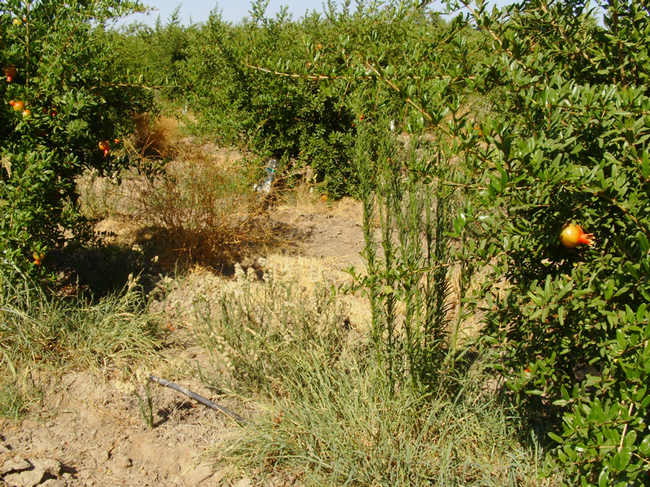Horseweed and hairy fleabane are closely related annual weeds that are widespread in Central Valley orchards and vineyards where many populations have evolved resistance to glyphosate. Interestingly, however, the geographic distribution of glyphosate resistance differs markedly between the two weeds.
A survey of 42 horseweed populations across the Central Valley in 2010 showed that glyphosate-resistant plants were abundant across the southern part of the Valley but that horseweed in the northern part of the Valley was still largely susceptible. In contrast, a survey (unpublished) of 35 hairy fleabane populations in the same general area in 2010 showed that glyphosate-resistant fleabane plants were abundant across both northern and southern parts of the Central Valley. Why the difference?
We don’t know, but hopefully over the next couple of years we will get a better idea of what’s going on. It may be that glyphosate use differed between the specific locations where horseweed and hairy fleabane were abundant. It may be that the genetic and physiological basis of resistance differs between the species and results in different fitness costs in the two weeds. It may be that resistance evolves differently in a diploid (horseweed) than a polyploid (hairy fleabane). We just don’t know the answer, but we will figure it out!
